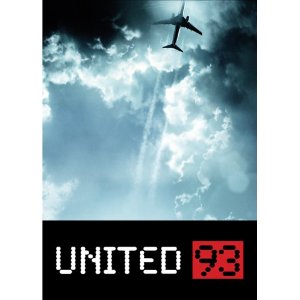Hollywoodland
Posted on September 4, 2006 at 12:00 pm
B-| Lowest Recommended Age: | High School |
| MPAA Rating: | Rated R for language, some violence and sexual content. |
| Profanity: | Some very strong language |
| Alcohol/ Drugs: | Drinking, smoking |
| Violence/ Scariness: | Graphic violence, question of suicide or murder, character gets beat up badly |
| Diversity Issues: | None |
| Date Released to Theaters: | 2006 |
| Date Released to DVD: | 2007 |
| Amazon.com ASIN: | B000KWZ7JC |
Is there a more heartbreakingly unsolveable mystery than a suicide? The only person who really knows what happened is gone. Even if we find out the how, we who are left behind will always wonder why. Those who are still here have made a decision to live. Whether or not we have ever explicitly considered Hamlet’s question, “to be or not to be,” the option is always there, and there is a dreadful fascination with those who made the other choice. Were they braver? Wiser? Were they disturbed? Was there something anyone could have said or done to change their minds?
In 1959, George Reeves, one of the biggest stars of the early days of television, committed suicide. Reeves played Superman and was a hero to the first generation of kids to grow up with television. He was a brand new kind of superstar. But his very ubiquity as Superman made it difficult for casting directors to see him in any other role. Finally, in dispair over his lack of professional prospects, he shot himself.
But like many other Hollywood deaths, from Virginia Rappe to Thomas Ince to Paul Bern to The Black Dahlia, speculation about a possible cover-up has led to one or more movies “inspired by” real events.
It is Hollywood, after all, or Hollywoodland, as the famous sign originally read. The name of a modest housing development has now become a word that means glamour and fantasy. Both make us wonder — could anyone who was famous in Hollywood want to die? And if someone wanted a cover-up, isn’t Hollywood the place where they know how to make us believe whatever they want us to?
There is some symbolism, maybe some irony in Reeves’ famous role being the split character of both Superman and his mild-mannered secret identity, reporter Clark Kent. Anyone in Hollywood can be both Kent and Superman. When we meet Reeves (Ben Affleck, looking beefy), trying to get his picture taken at a glamorous nightclub. Like every other aspiring actor, he thinks that inside him there is a star waiting to be born. He has just appeared in a very small part in the biggest movie ever made, Gone With the Wind. He thinks he is on the brink of having his dream come true.
He begins an affair with an older woman (Diane Lane), the wife of a studio executive. And he gets a job in television. He thinks it is silly, but it becomes enormously successful, and he is so identified with the role that no one else will hire him. His one big break, a part in a very important film, falls apart when a test audience won’t buy him in another part.
Is that a reason to die? Reeves’ mother hires a private detective (Adrien Brody) to find out. But there are those who do not want him asking questions. And he has his own problems.
The film evokes the time beautifully, with meticulously chosen sets, costumes, and music. The re-creations of the old “Superman” television show are especially well handled, both the behind-the scenes moments (a red and blue costume would not photograph properly in black and white) and the cheerfully cheesy show itself. The brief scene with Affleck as Reeves as Superman as Kent is so true to the original that viewers old enough to remember watching it in its original broadcast will expect it to be followed by commercials for Maypo and Pepsodent.
The performances are outstanding. Lane is exquisite at showing conflicting motives and emotions. She is a woman both sure of her beauty and honest that it is on the wane, comfortable being sexually agressive but wanting to be wooed. Affleck, relieved of the burden of being a leading man, is gratefully enigmatic. What does Reeves want? To be an artist? To be a star? To be married? Is he talented? Is he smart? Affleck and the script let us wonder if Reeves himself could have answered those questions.
But that ambiguity is both the movie’s strength and its weakness. The movie fails in trying to make Reeves’ story a big metaphor, and the attempts to find some parallels in the story of the detective’s own troubles is only a distraction. The characters are too remote to make us care about their tawdry problems. Like the audiences he looked down on, we’d rather see Reeves play Superman.
Parents should know that this movie has a great deal of mature material, beginning with its theme of suicide, with graphic and disturbing images. There are explicit sexual references and situations, including adultery. Characters drink and smoke and use very strong language. There are graphic scenes of violence, including a character who is badly injured by thugs.
Families who see this movie should talk about how everyone — not just actors — must learn to find a balance between what we want and what we can get, who we are and who others want us to be.
Families who enjoy this movie will also enjoy Sunset Boulevard, L.A. Confidential and Chinatown (the last two with very mature material).

